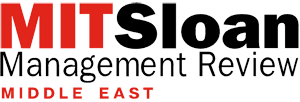Culture Risks Stalk Indian Workplaces, Gallup Study Finds
A survey of 275 senior HR leaders finds ethics, inclusion and purpose firmly rooted in Indian workplaces, yet frequent feedback, agile leadership and quicker decisions remain elusive.
Topics
News
- Analog Devices rolls out CodeFusion Studio 2.0
- US Investment Manager Vanguard Picks Hyderabad for First India GCC
- Infosys Launches Topaz Fabric to Modernize IT Ops
- OpenAI Taps AWS in $38 Billion Cloud Partnership Deal
- Apple Pushes Siri AI Launch to 2026 Amid Technical Challenges
- Musk, Altman Reignite Feud as OpenAI Reshapes Under New Foundation

Across Indian firms, values such as ethics, inclusion and a clear sense of purpose are strong yet execution falls short in the basics that drive performance, with too little weekly feedback and coaching, slow decision cycles, and leaders who aren’t visible enough in making strategy feel real, a Gallup–NHRDN survey found.
The new Gallup-NHRDN India Culture Risk Report, released on Monday, 3 November, draws on a survey of 275 senior HR leaders from large Indian enterprises.
The National HRD Network (NHRDN), Gallup’s partner for the study, is the country’s apex association for people development professionals, headquartered in New Delhi with a pan-India reach across industry and academia.
The study paints a complex picture of India Inc: strong values on paper, but growing performance and agility gaps in practice. While 61% of respondents called ethics and compliance a core cultural strength, and 45% said diversity and inclusion are part of their company’s DNA, an equal 45% said performance management is a critical culture risk. Another 44% flagged their organization’s lack of agility in responding to disruption.
Gallup defines these gaps as “culture risks,” or shortfalls in leadership behaviors, feedback mechanisms, and decision-making speed that aren’t always visible in metrics, but can slowly chip away at employee trust and operational execution.
Performance management is the most widely acknowledged concern. Many HR leaders said that while performance systems are in place, feedback remains infrequent and often lacks clarity. Employees receive little regular coaching. Appraisals, one respondent said, feel like annual anxiety triggers, not development opportunities.
This is consistent with Gallup’s global data, which shows that employees who get meaningful weekly feedback are five times more likely to be engaged.
Disruption and the ability to adapt quickly form the second major pain point. Companies may be strong at planning and execution, but slow when change hits. Respondents blamed over-reliance on top-down approvals, limited risk appetite, and too much consensus-seeking.
Gallup’s analysis reframes agility as a cultural trait, not just a structural one. Organizations, it argues, must build norms of experimentation, quicker decision loops, and stronger cross-functional collaboration. Otherwise, agility remains stuck on the org chart.
Leadership visibility emerged as a third concern. While most HR leaders expressed confidence in their top management’s intent, many said leaders are not seen enough, in person or in action. Communications are often top-down, and the lived culture doesn’t always reflect stated strategy.
“People want to see leaders navigating gray areas in real time,” the report said. “Visibility builds belief. Silence erodes trust.”
The disconnect, Gallup noted, is more visible in fast-growing companies and those navigating digital transformation. Leaders here often get pulled into firefighting and miss opportunities to reinforce values or course-correct on culture.
Still, even in areas seen as cultural strengths such as ethics, inclusion, and purpose, the report urges caution. These are not self-sustaining. As new generations enter the workforce, expectations change. Gen Z workers, the study says, demand direct feedback, inclusive leadership, and a strong sense of meaning from day one.
Sectorally, the study noted that financial services and tech firms fare better on digital agility but struggle with coaching cultures. Legacy manufacturing and public-sector firms, on the other hand, tend to score higher on ethics and compliance but lag in speed and innovation mindsets.
Gallup recommends three shifts: move from annual reviews to weekly coaching; shorten decision cycles by clarifying who owns which calls; and boost leadership visibility by modeling vulnerability, clarity, and empathy in turbulent times.
Culture risk, it concludes, doesn’t show up in quarterly numbers, but often explains why strategies stall, teams drift, or talent walks.




